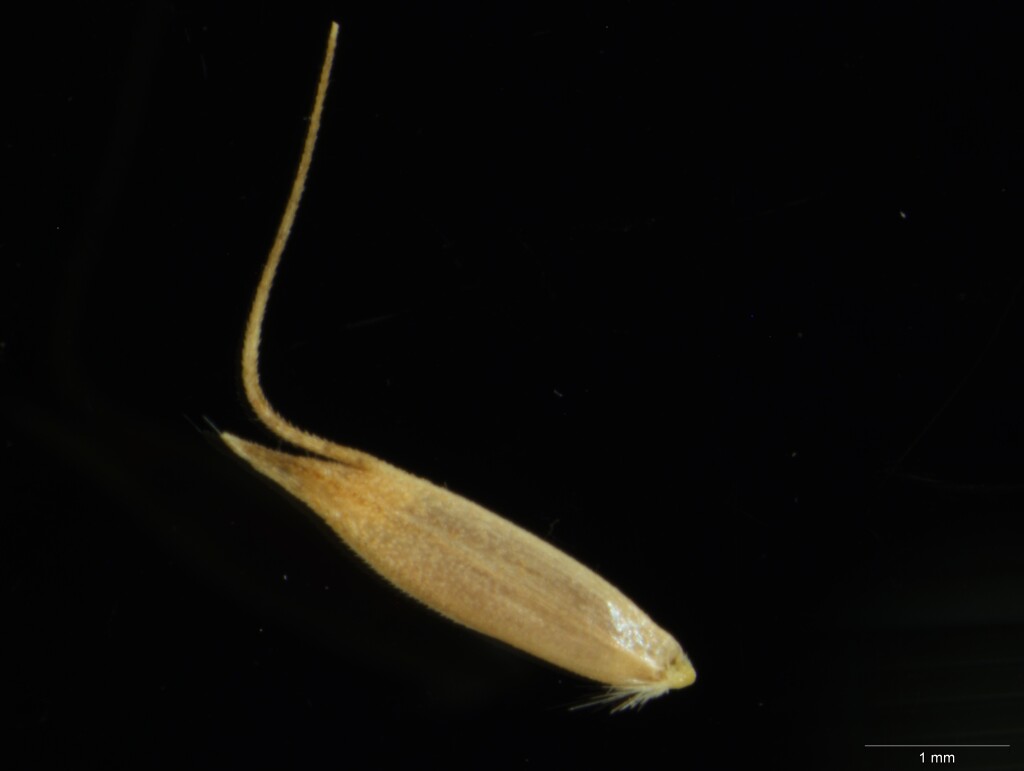Deyeuxia brachyathera
(Stapf.) VickeryTufted or shortly rhizomatous, glabrous perennial, culms erect, to 150 cm high. Leaf-blades scabrous, flat, to 35 cm long and 8 mm wide; ligules rounded, 2–6 mm long. Inflorescence a contracted but rather loose panicle, often interrupted or narrowly lobed toward base, 8–25 cm long. Spikelets 3.5–7 mm long, laterally flattened, often slightly purplish; glumes acuminate, the lower shorter by c. 1 mm, scabrous along the keel and usually minutely scabrous on the sides; lemma subequal to spikelet, acute, minutely and evenly scabrous, usually with 3–5 raised nerves, awned from shortly (1–2 mm) below the apex; awn recurved, usually longer than lemma and conspicuously exserted from glumes, not twisted at base; callus hairs c. 1 mm long or shorter; rachilla bristle glabrous or sparsely hairy, to 1 mm long but often rudimentary. Flowers Nov.–Apr.
NIS, EGL, EGU, HSF, HNF, MonT, HFE, VAlp. Also NSW, Tas. Occasional in wet alpine grasslands and heathlands, but commoner in or near peaty bogs or swamps of subalpine woodlands or tall montane forests. Apart from the main ranges, the species has also been collected near Mt Pilot and Mt Samaria in the north-east, and at lower altitude at Steels Creek near Yarra Glen.
Records of D. brachyathera from the Grampians have been based on misdetermined material of the superficially similar D. densa.
Walsh, N.G. (1994). Poaceae. In: Walsh, N.G.; Entwisle, T.J., Flora of Victoria Vol. 2, Ferns and Allied Plants, Conifers and Monocotyledons, pp. 356–627. Inkata Press, Melbourne.
 Spinning
Spinning

